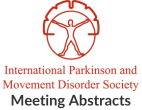Analysis of functional connectivity using machine learning and deep learning in EEG data from patients with focal dystonia
Objective: To apply a novel machine learning (ML) method to EEG data as a tool for the diagnosis of dystonia, providing a medical interpretation and…Childhood-onset writer’s cramp evolving to generalised dystonia –a new mutation in KMT2B gene
Objective: To present a case of childhood-onset dystonia with a new mutation in KMT2B gene. Background: KMT2B-related dystonia (DYT-KMT2B) is an increasingly recognized cause of…Exome-wide and Mitogenome Sequencing of Indian Dystonia Patients
Objective: To identify whole exome and mitochondrial genome mutation spectrum of dystonia in India and to establish clinical significance of mutations by phenotype-genotype correlation. Background:…Space-occupying lesion presenting with hand dystonia
Objective: To report the case of a patient diagnosed with a solitary fibrous tumor located on the foramen magnum that presented with hand dystonia Background:…Epidemiological, clinical and paraclinical characteristics of paroxysmal dystonia in multiple sclerosis : A study of Tunisian cohort
Objective: To describe the specificities of paroxysmal dystonia (PD) in a cohort of Tunisian Multiple Sclerosis (MS). Background: Movements disorders are uncommon in multiple sclerosis.…Hemibody dystonia secondary to Neurobehçet disease : a case report
Objective: To report the case of a patient who presented with dystonia secondary to an inflammatory lesion of the putamen Background: Behçet’s Disease is a multisystemic…De novo mutation in TMEM151A and Paroxysmal Kinesigenic Dyskinesia
Objective: To confirm the association between TMEM151A mutation and paroxysmal kinesigenic dyskinesia. Background: Heterozygous mutations in TMEM151A, encoding a protein of undetermined function, have been…ACUTE MOVEMENT DISORDERS: A NEW ASPECT OF SARS-COV2 INFECTION IN CHILDREN
Objective: To analyze the clinical aspects, radiological features and evolution of COVID-19-associated movement disorders (MD) in children and adolescents. Background: During the 5th wave of…Muscarinic M2 cholinergic receptors in cervical dystonia
Objective: To characterize the M2 muscarinic acetylcholine receptor binding in patients with cervical dystonia, measured with non-invasive high-resolution PET, using [18F]FP-TZTP ligand. Background: While antimuscarinic…Increased Prevalence of Thyroid Disease in Cervical Dystonia
Objective: This study evaluated the hypothesis that autoimmune disorders may be more common in cervical dystonia (CD) than neurological controls. Background: Although there are many…
- « Previous Page
- 1
- 2
- 3
- 4
- 5
- 6
- …
- 12
- Next Page »
